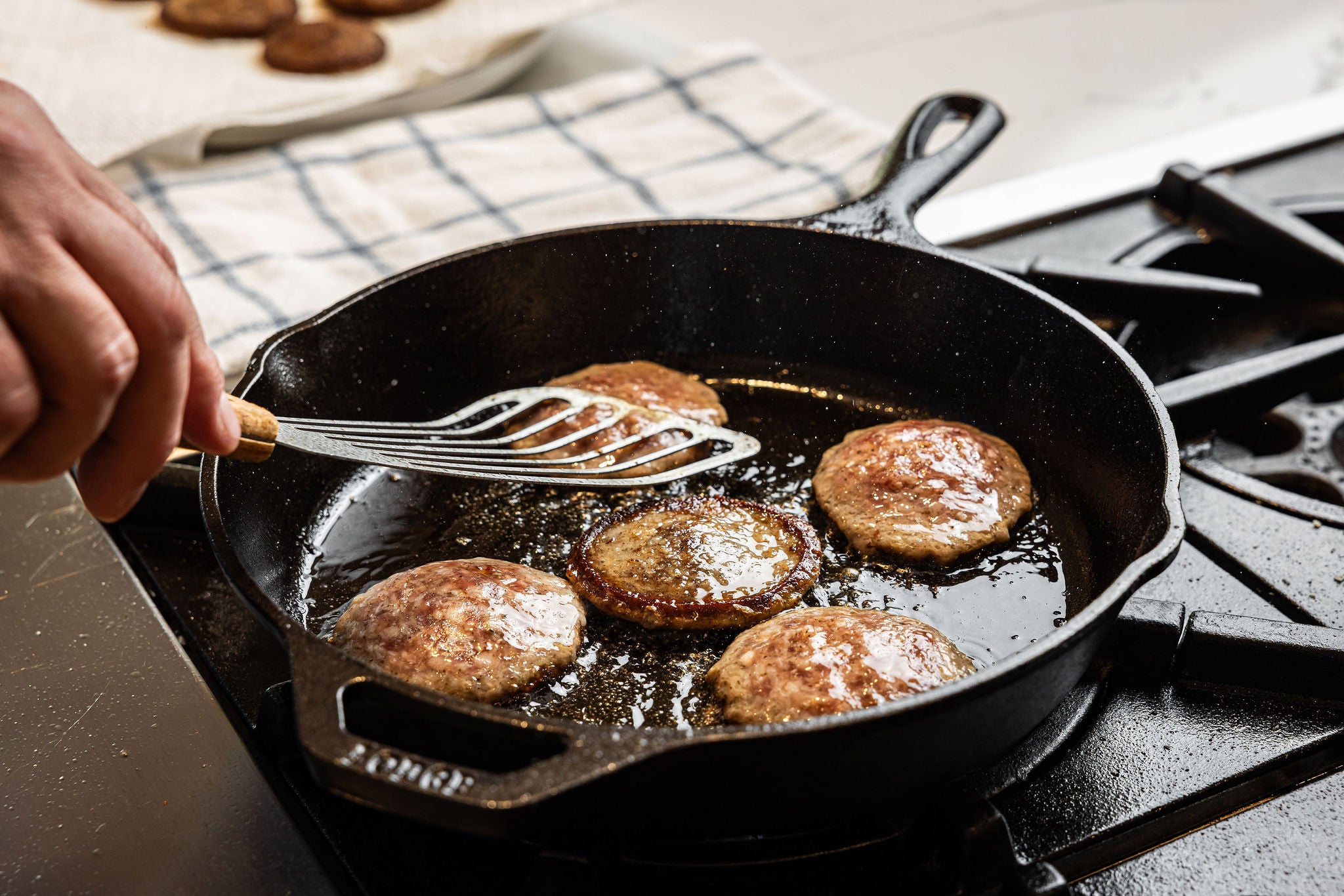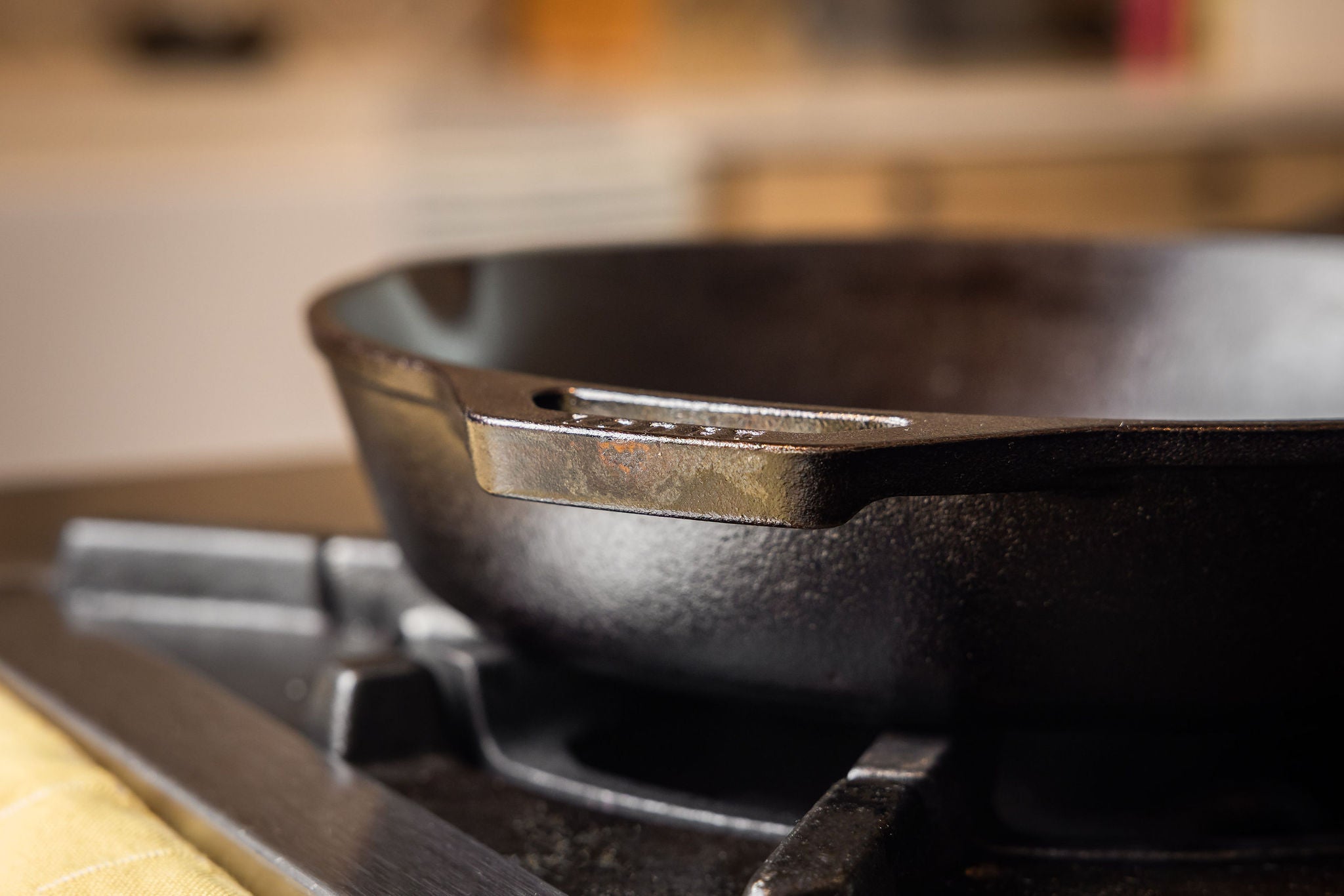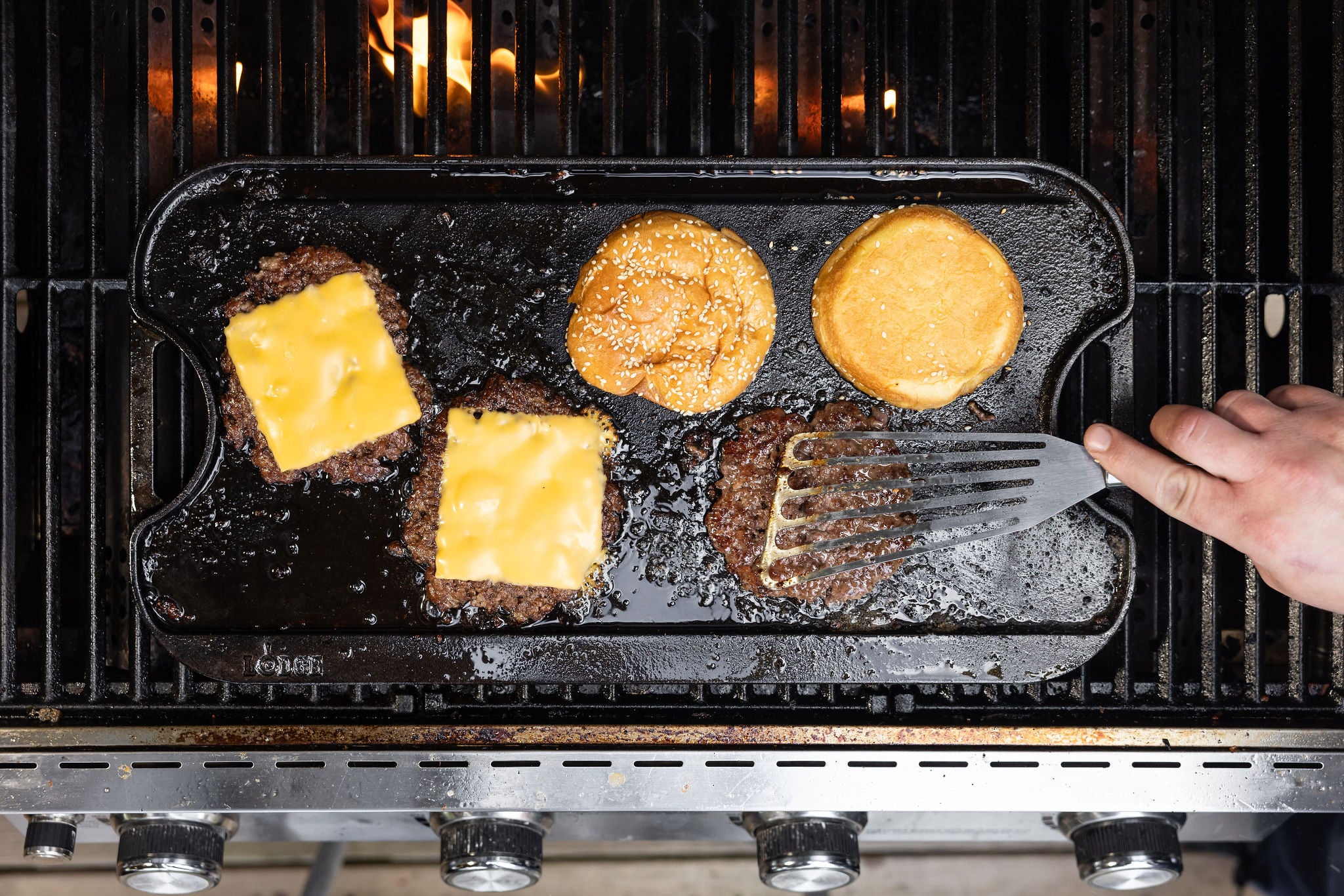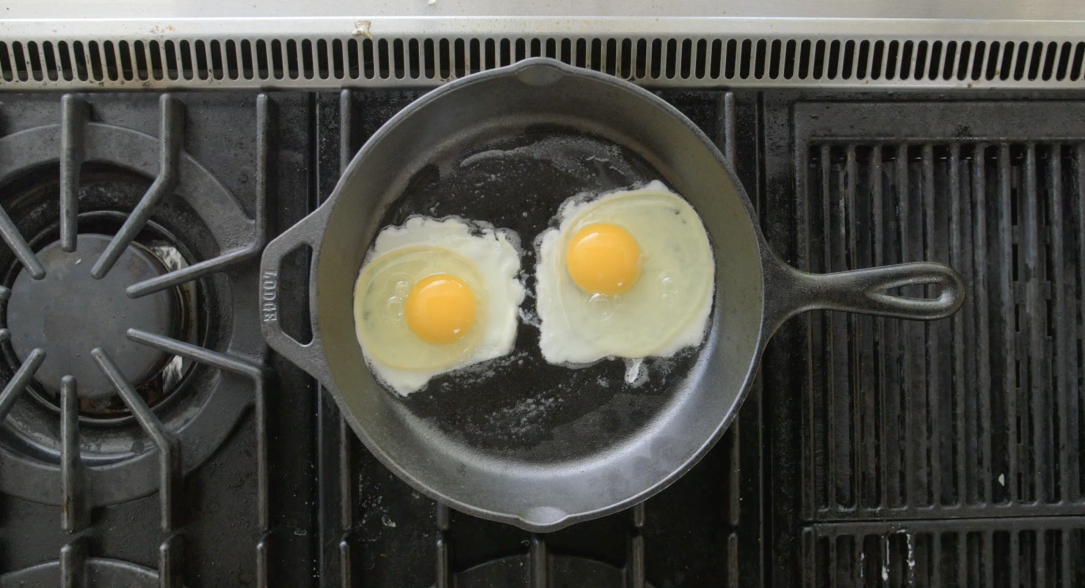All Lodge cookware comes seasoned and ready to use—straight from the foundry. You also build seasoning every time you cook, but there may be occasional instances when you need to reseason your cookware in the oven. Reseasoning a cast iron skillet is simple to do at home, and your pan will be back in business in no time. Follow our easy steps to season cast iron in the oven and download our Seasoning Guide to add a quick go-to reference to your cookbook. Let’s get started!
Reseason your pan

Wash your pan
Use warm, soapy water to wash your pan, then dry completely with a paper towel or lint-free cloth.

Apply oil
Add a very thin layer of cooking oil—like our Seasoning Spray—to the surface of your cast iron (inside and out) with a cloth or lint-free paper towel. Go easy on the oil—you want just a thin layer, not enough to drip or run when you tilt it.

Bake for 1 hour
Preheat your oven to 450–500 degrees F. Place aluminum foil on the bottom rack of the oven to catch any excess oil. Put your cookware upside down on the center rack. This helps prevent oil from pooling on the cooking surface. Bake for 1 hour.
Turn off the heat and allow the cast iron skillet to cool in the oven. This allows the seasoning to further cure and adhere to the iron.

What is seasoning?
Seasoning is just oil baked onto the pan through a process called polymerization. When oils or fats are heated in cast iron at a high enough temperature, they change from a wet liquid into a slick, hardened surface. This reaction creates a layer of seasoning that is molecularly bonded to the iron. This layer of oil gives cast iron cookware a natural, easy-release finish that gets better with every use. Every piece of Lodge cast iron is seasoned in our South Pittsburg foundry and ready to use, straight from the box! No at-home seasoning required.

The best seasoning? Cooking.
There are two ways to maintain the seasoning of your cast iron cookware. The best—and easiest—way is to use your pan regularly. Each time you cook with oil or fat, you're adding another layer of seasoning to the pan. Over time, these layers build up to form a strong, nonstick cooking surface.
These initial layers of seasoning added as you cook in a new cast iron skillet may be uneven. That's okay. How and what you cook, hot spots on your stove, and the temperature setting all affect how and where the oil bonds to the pan. Our best advice? Just keep cooking! These patchy layers will interlock like puzzle pieces to create a well-seasoned cooking surface. To get you started, we’ve created a roundup of our favorite recipes for new pieces of cast iron.

My new Lodge seasoned cast iron cookware has a spot or mark that looks unfinished. What is this?
When you get a new piece of Lodge cookware, you might notice a small spot or mark that looks unfinished or rusty. This is all a part of the process that makes cast iron special! We season our cookware with oil on a hanging conveyor, which sometimes causes a small spot or bubble to form around the edge of the skillet or on the support handle where the skillet was hung. The seasoning process is all-natural and makes your cookware ready to use as soon as you get it home. This variation might chip away, revealing a brown color. Don’t worry! This isn’t rust and it’s perfectly safe—it’s simply oil that has not fully carbonized. With regular care and use, this spot will disappear. It’s a testament to cast iron’s ability to roll with the punches and get better with age.
Find the right oil for cast iron cooking & seasoning

What oils are best for cast iron?
The short answer: it depends! When you're cooking, check to see oil works best for your recipe. When you're re-seasoning, reach for an oil with a high smoke point. In the Lodge Test Kitchen, we likes vegetable oil, melted shortening, or canola oil, like our Seasoning Spray.
FAQs
Is the oil that Lodge uses Kosher?
The oil that we use to season our cookware is a Kosher-certified, soy-based vegetable oil. Although the oil is Kosher, Lodge's manufacturing process is not certified Kosher.
View the Kosher certification here (listed under Vegetable Oils on page 3 of the pdf).
Is Lodge seasoning oil GMO free?
Bear with us, we’re about to get a little science-y! Since 90% of soybeans in the U.S. are genetically modified, traces of these materials can be brought into the extraction process. However, our oil goes through a refinement process at very high temperatures, effectively removing any GMO proteins from the final product. In fact, when our oil is sent for testing to a third party, those materials are no longer present.
I avoid soybeans and seed oils for health reasons, do I need to avoid seasoned cast iron?
Lodge is seasoned with 100% natural soybean oil. Some folks avoid soy due to an allergy or concerns around inflammation, but Lodge cookware is perfectly safe for these groups of people. That’s because the oil we use has been refined at very high temperatures to the point that the proteins that cause food allergies or inflammation are no longer detectable.
If you’d prefer not to use soy bean oil when cooking or seasoning at home, we simply recommend using an oil that has a high smoke point and fits your needs.
Will cooking acidic foods in cast iron hurt the seasoning?
Recipes that call for acidic ingredients—like tomato sauce or lemon juice—aren’t the best choice for new cast iron because they can break down seasoning. After you build up your seasoning, you can introduce acidic ingredients with cook times under 45 minutes.
When drying my cast iron pan, dark residue appeared on my towel. Is this normal?
Yes, this is perfectly normal and safe. Occasionally, when your seasoning works a little too hard with acidic foods or really high heat, dark residue can come off on your towel when cleaning. This can also be present with brand new cookware. This will work itself out as you continue to cook with your pan.
There are variations in seasoning on my pan. Is that normal?
Cast iron is built to last a lifetime, so it’s only natural for the seasoning on your cookware to change over time. The more you cook, the stronger that seasoning gets. After cooking something acidic or dealing with a stuck-on mess, you might notice the seasoning looks a little dull, and that’s okay. Cast Iron is tough. Your cookware isn’t ruined, you can easily rebuild that seasoning just by getting back in the kitchen and cooking something delicious.
Black flakes of seasoning are coming off my pan. What's happening?
Sometimes layers of seasoning may flake off your cast iron pan. This can happen if layers of seasoning have not fully bonded to the metal. If your pan is flaking, don't panic. Simply scrub the pan with a nylon brush or salt, then rinse, hand dry, and rub with oil.
This usually resolves the more you cook, but if the problem persists, you can reseason your cookware in the oven to help build up a strong layer of seasoning.
Why is the surface of my cast iron cookware rough?
The texture is a result of the sand casting process that is used, creating a surface finish that has a texture that will allow the seasoning to adhere to it. As you use your cookware over time and continue to season it, the pan will become smoother. Unlike other types of cookware, Lodge Cast Iron only gets better with use.
Some customers prefer to smooth out the roughness, and it is okay to do so using fine grade sandpaper. Be sure to season the item promptly after doing so.


